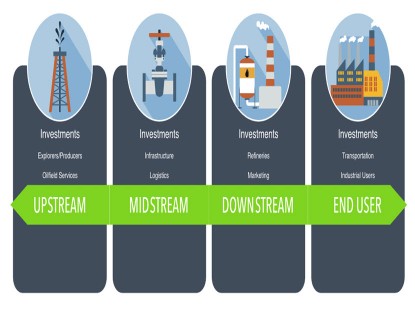What’s Driving the Interest in Natural Gas?
Hennessy Gas Utility Fund Portfolio Manager, Ryan Kelley shares his insights on the increase in natural gas production, how demand is outpacing supply, and LNG prices around the world.
-
 Ryan C. Kelley, CFAChief Investment Officer and Portfolio Manager
Ryan C. Kelley, CFAChief Investment Officer and Portfolio Manager -
 L. Joshua Wein, CAIAPortfolio Manager
L. Joshua Wein, CAIAPortfolio Manager
Transcript
Beau Barnett
Hi everyone. My name is Beau Barnett and I'm the Sales Director for Hennessy Funds. I want to thank all of you for taking the time out of your busy schedules to join us for what is going to be a quick but informative video on the recent developments in natural gas and the Hennessy Gas Utility Fund. If it's your first time looking at the Hennessy Gas Utility Fund, the Fund invests in a portfolio of distribution-focused natural gas companies and is the only Fund in the industry that tracks the American Gas Association Index.
Given the volatility we've seen lately in the Energy sector and specifically natural gas, due to a number of different factors, including the unfortunate events in the Ukraine, it will be a timely and topical discussion. Today you're going to hear from Ryan Kelley. Ryan is the chief investment officer at Hennessy Funds, as well as the portfolio manager of the Hennessy Gas Utility Fund.
Ryan has over 26 years of experience, including ten years of managing the Gas Utility Fund. Today, Ryan is going to discuss the rising price and consumption of natural gas as well, as well as how the United States is positioned globally in the natural gas markets, including as a major exporter of liquefied natural gas or LNG. He's also going to discuss the main drivers of the performance of the Hennessy Gas Utility Fund.
Thanks again for your time. And with that, I'm going to go ahead and turn it over to Ryan Kelley, portfolio manager of the Hennessy Gas Utility Fund.
Ryan Kelley
Natural gas prices are the highest they've been since 2008, surpassing $9 per million BTU during the summer, more than double last year's average of less than $4. Before we discuss the reasons for this, I'd like to pause and make one comment about our fund, the Hennessy Gas Utility Fund. We invest principally in utilities and other companies that deliver natural gas to their customers and charge them for doing so.
The customers themselves pay for the natural gas. In a sense, these companies are toll takers, meaning that the more the meter spins, the greater their profits. Simply put, the price of natural gas is not a direct primary driver of Fund performance, whereas volume is. That being said, let's get back to what's driving natural gas. We need to look at both supply and demand.
Coming out of the pandemic, production has increased, yet ready-to-use natural gas in storage is relatively low, meaning that our supply levels have decreased overall. Yet demand is up meaningfully. While economic growth and commercial, residential, and industrial usage increase demand over the longer term, weather is the primary driver above all else. As extreme cold spells become more commonplace during the winter and temperatures set records this past summer, demand increased substantially for both natural gas and electricity. And given that close to 40% of electricity is generated by natural gas, we've seen demand outpacing supply, which has pushed prices to historically high levels.
How have exports affected natural gas? Well, over the past decade, the U.S. has been exporting more and more natural gas via pipelines, primarily to Mexico and on tankers which transport LNG or liquefied natural gas around the world.
Since the Russian invasion of Ukraine and the disruption of natural gas flows from Russia to Europe, European LNG prices have risen dramatically, and worldwide LNG demand has surged. Prices in Europe and Asia have skyrocketed, currently at $58 and $38 per million BTU versus the U.S. at around $7. The U.S. has become the largest exporter of LNG to Europe, with more than three quarters of total U.S. shipments heading to Europe this year.
While this increase in demand is substantial, we believe that LNG exports are not the primary driver of this year's surging prices in the U.S., although they are certainly a contributor. LNG exports this year account for about 12% of total production, just slightly higher than last year's 11% and have grown about 13% year over year. Again, it is primarily extreme weather, electricity generation, and lower levels of storage that have caused the current supply and demand imbalance in the U.S.
Returning to the Fund briefly, I want to reemphasize that the primary drivers of performance are overall demand and growth of the industry, not fluctuations in prices or LNG exports. We do have one holding, which is the largest U.S. LNG exporter as well as others that have export facilities, all of which are benefiting from the LNG boom. But this is less than 10% of the overall Fund.
Dividends are a vital component of the Fund's total return and growth in dividends, growth in capital expenditures, and growth in consumption are what ultimately drive Fund performance over the long term.
- In this insight:
- Energy
- Gas Utility Fund
You might also like
-
 Sector Highlight
Sector HighlightNatural Gas in 2025: Powering Growth and Innovation
 Ryan C. Kelley, CFAChief Investment Officer and Portfolio Manager
Ryan C. Kelley, CFAChief Investment Officer and Portfolio Manager L. Joshua Wein, CAIAPortfolio ManagerRead the Sector Highlight
L. Joshua Wein, CAIAPortfolio ManagerRead the Sector HighlightThe Hennessy Gas Utility Fund is a convenient and simple way for investors to invest in the group of publicly traded members of the American Gas Association (AGA). The Fund’s Portfolio Managers attended the AGA Financial Forum recently to gain insight into trends affecting natural gas companies. The following highlights their takeaways from the Financial Forum.
-
 Investment Idea
Investment IdeaDefining the Energy "Value Chain"
 Ben Cook, CFAPortfolio ManagerRead the Investment Idea
Ben Cook, CFAPortfolio ManagerRead the Investment IdeaEnergy is a large and complex sector. The sector’s broad sub-industries can be divided into a “value chain,” each segment of which has different characteristics and offers different investment opportunities.
-
 Portfolio Perspective
Portfolio Perspective
Midstream FundWhat’s Driving Midstream Company Performance?
 Ben Cook, CFAPortfolio Manager
Ben Cook, CFAPortfolio Manager L. Joshua Wein, CAIAPortfolio ManagerRead the Commentary
L. Joshua Wein, CAIAPortfolio ManagerRead the CommentaryThe Portfolio Managers Ben Cook, CFA and Josh Wein share their insights on midstream companies’ strong performance over the past year, their shareholder-friendly capital allocation approach and current valuations.
